36157-40-1
| 中文名 | 2,5-二氯-3-乙酰基噻吩 |
|---|---|
| 英文名 | 3-Acetyl-2,5-dichlorothiophene |
| 中文别名 |
3-乙酰-2,5-二氯噻吩
3-乙酰基-2,5-二氯噻吩 3-乙酰基-2,5-二氯噻吩 2,5-二氯-3-噻吩基甲基酮 |
| 英文别名 |
1-(2,5-Dichlorothiophen-3-yl)ethanone
1-(2,5-Dichloro-3-thienyl)ethanone EINECS 252-893-3 MFCD00014522 Ethanone, 1-(2,5-dichloro-3-thienyl)- 3-Acetyl-2,5-dichlorothiophene |
| 密度 | 1.5±0.1 g/cm3 |
|---|---|
| 沸点 | 233.9±40.0 °C at 760 mmHg |
| 熔点 | 37-40 °C(lit.) |
| 分子式 | C6H4Cl2OS |
| 分子量 | 195.066 |
| 闪点 | 95.3±27.3 °C |
| 精确质量 | 193.935989 |
| PSA | 45.31000 |
| LogP | 2.82 |
| 外观性状 | 固体 |
| 蒸汽压 | 0.1±0.5 mmHg at 25°C |
| 折射率 | 1.576 |
| 储存条件 | 密封、阴凉、干燥、通风保存 |
| 稳定性 | 常规情况下不会分解,没有危险反应 |
| 计算化学 | 1.疏水参数计算参考值(XlogP):3.2 2.氢键供体数量:0 3.氢键受体数量:2 4.可旋转化学键数量:1 5.互变异构体数量:2 6.拓扑分子极性表面积45.3 7.重原子数量:10 8.表面电荷:0 9.复杂度:151 10.同位素原子数量:0 11.确定原子立构中心数量:0 12.不确定原子立构中心数量:0 13.确定化学键立构中心数量:0 14.不确定化学键立构中心数量:0 15.共价键单元数量:1 |
| 更多 | 1. 性状:固体 2. 密度(g/mL,20℃):未确定 3. 相对蒸汽密度(g/mL,空气=1): 未确定 4. 熔点(ºC):37-39 5. 沸点(ºC,常压): 未确定 6. 沸点(ºC,15mm hg):未确定 7. 折射率:未确定 8. 闪点(ºC):未确定 9. 比旋光度(º):未确定 10. 自燃点或引燃温度(ºC): 未确定 11. 蒸气压(kPa,25ºC):未确定 12. 饱和蒸气压(kPa,60ºC): 未确定 13. 燃烧热(KJ/mol):未确定 14. 临界温度(ºC):未确定 15. 临界压力(KPa):未确定 16. 油水(辛醇/水)分配系数的对数值:未确定 17. 爆炸上限(%,V/V):未确定 18. 爆炸下限(%,V/V):未确定 19. 溶解性:未确定 |
Synonym:None Section 2 - COMPOSITION, INFORMATION ON INGREDIENTS
Risk Phrases: 20/21/22 Section 3 - HAZARDS IDENTIFICATION EMERGENCY OVERVIEW
Harmful by inhalation, in contact with skin and if swallowed.The toxicological properties of this material have not been fully investigated. Potential Health Effects Eye: May cause eye irritation. Skin: May cause skin irritation. May be harmful if absorbed through the skin. Ingestion: The toxicological properties of this substance have not been fully investigated. May be harmful if swallowed. Inhalation: The toxicological properties of this substance have not been fully investigated. May be harmful if inhaled. Chronic: No information found. Section 4 - FIRST AID MEASURES Eyes: Flush eyes with plenty of water for at least 15 minutes, occasionally lifting the upper and lower eyelids. Get medical aid immediately. Skin: Get medical aid immediately. Flush skin with plenty of water for at least 15 minutes while removing contaminated clothing and shoes. Wash clothing before reuse. Ingestion: If victim is conscious and alert, give 2-4 cupfuls of milk or water. Never give anything by mouth to an unconscious person. Get medical aid immediately. Inhalation: Get medical aid immediately. Remove from exposure and move to fresh air immediately. If not breathing, give artificial respiration. If breathing is difficult, give oxygen. Notes to Physician: Antidote: None reported. Section 5 - FIRE FIGHTING MEASURES General Information: As in any fire, wear a self-contained breathing apparatus in pressure-demand, MSHA/NIOSH (approved or equivalent), and full protective gear. Extinguishing Media: Use water spray to cool fire-exposed containers. Use extinguishing media most appropriate for the surrounding fire. Section 6 - ACCIDENTAL RELEASE MEASURES General Information: Use proper personal protective equipment as indicated in Section 8. Spills/Leaks: Absorb spill with inert material (e.g. vermiculite, sand or earth), then place in suitable container. Clean up spills immediately, observing precautions in the Protective Equipment section. Avoid generating dusty conditions. Provide ventilation. Section 7 - HANDLING and STORAGE Handling: Wash thoroughly after handling. Remove contaminated clothing and wash before reuse. Use only in a well-ventilated area. Minimize dust generation and accumulation. Avoid contact with eyes, skin, and clothing. Avoid ingestion and inhalation. Storage: Store in a cool place in the original container and protect from sunlight. Store in a cool, dry, well-ventilated area away from incompatible substances. Keep containers tightly closed. Section 8 - EXPOSURE CONTROLS, PERSONAL PROTECTION Engineering Controls: Use adequate general or local explosion-proof ventilation to keep airborne levels to acceptable levels. Exposure Limits CAS# 36157-40-1: Personal Protective Equipment Eyes: Wear appropriate protective eyeglasses or chemical safety goggles as described by OSHA's eye and face protection regulations in 29 CFR 1910.133 or European Standard EN166. Skin: Wear appropriate gloves to prevent skin exposure. Clothing: Wear appropriate protective clothing to prevent skin exposure. Respirators: Follow the OSHA respirator regulations found in 29 CFR 1910.134 or European Standard EN 149. Use a NIOSH/MSHA or European Standard EN 149 approved respirator if exposure limits are exceeded or if irritation or other symptoms are experienced. Section 9 - PHYSICAL AND CHEMICAL PROPERTIES Physical State: Solid Color: Not available. Odor: Not available. pH: Not available. Vapor Pressure: Not available. Viscosity: Not available. Boiling Point: Not available. Freezing/Melting Point: 37 - 40 deg C Autoignition Temperature: Not available. Flash Point: > 110 deg C (> 230.00 deg F) Explosion Limits, lower: Not available. Explosion Limits, upper: Not available. Decomposition Temperature: Solubility in water: Specific Gravity/Density: Molecular Formula: C6H4Cl2OS Molecular Weight: 195.07 Section 10 - STABILITY AND REACTIVITY Chemical Stability: Stability unknown. Conditions to Avoid: Incompatible materials, dust generation. Incompatibilities with Other Materials: Strong oxidizing agents. Hazardous Decomposition Products: Hydrogen chloride, carbon monoxide, oxides of sulfur, carbon dioxide. Hazardous Polymerization: Has not been reported Section 11 - TOXICOLOGICAL INFORMATION RTECS#: CAS# 36157-40-1 unlisted. LD50/LC50: Not available. Carcinogenicity: 3-Acetyl-2,5-dichlorothiophene - Not listed by ACGIH, IARC, or NTP. Section 12 - ECOLOGICAL INFORMATION Section 13 - DISPOSAL CONSIDERATIONS Dispose of in a manner consistent with federal, state, and local regulations. Section 14 - TRANSPORT INFORMATION IATA Not regulated as a hazardous material. IMO Not regulated as a hazardous material. RID/ADR Not regulated as a hazardous material. Section 15 - REGULATORY INFORMATION European/International Regulations European Labeling in Accordance with EC Directives Hazard Symbols: XN Risk Phrases: R 20/21/22 Harmful by inhalation, in contact with skin and if swallowed. Safety Phrases: S 36/37 Wear suitable protective clothing and gloves. WGK (Water Danger/Protection) CAS# 36157-40-1: No information available. Canada None of the chemicals in this product are listed on the DSL/NDSL list. CAS# 36157-40-1 is not listed on Canada's Ingredient Disclosure List. US FEDERAL TSCA CAS# 36157-40-1 is not listed on the TSCA inventory. It is for research and development use only. SECTION 16 - ADDITIONAL INFORMATION N/A |
|
生态学数据: 对水是稍微有危害的不要让未稀释或大量的产品接触地下水、水道或者污水系统,若无政府许可,勿将材料排入周围环境
|
| 符号 |

GHS07 |
|---|---|
| 信号词 | Warning |
| 危害声明 | H302-H312-H315-H319-H332-H335 |
| 警示性声明 | P261-P280-P305 + P351 + P338 |
| 个人防护装备 | dust mask type N95 (US);Eyeshields;Gloves |
| 危害码 (欧洲) | Xn:Harmful; |
| 风险声明 (欧洲) | R20/21/22;R36/37/38 |
| 安全声明 (欧洲) | S26-S36-S36/37/39-S22-S36/37 |
| 危险品运输编码 | NONH for all modes of transport |
| WGK德国 | 3 |
| 海关编码 | 29349990 |
|
~50% 
36157-40-1 |
| 文献:Sharf, V. Z.; Taits, S. Z.; Gurovets, A. S.; Vol'kenshtein, Yu. B.; Fabrichnyi, B. P.; Shcherbakova, S. I. Chemistry of Heterocyclic Compounds (New York, NY, United States), 1982 , vol. 18, # 2 p. 130 - 133 Khimiya Geterotsiklicheskikh Soedinenii, 1982 , vol. 18, # 2 p. 171 - 175 |
| 上游产品 2 | |
|---|---|
| 下游产品 10 | |
| 海关编码 | 2934999090 |
|---|---|
| 中文概述 | 2934999090. 其他杂环化合物. 增值税率:17.0%. 退税率:13.0%. 监管条件:无. 最惠国关税:6.5%. 普通关税:20.0% |
| 申报要素 | 品名, 成分含量, 用途 |
| Summary | 2934999090. other heterocyclic compounds. VAT:17.0%. Tax rebate rate:13.0%. . MFN tariff:6.5%. General tariff:20.0% |




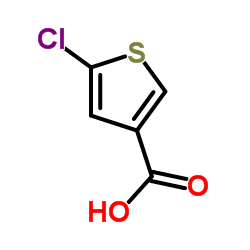
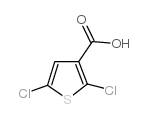
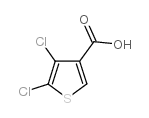
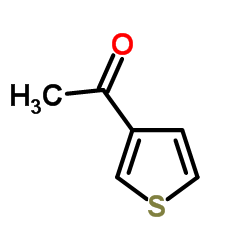
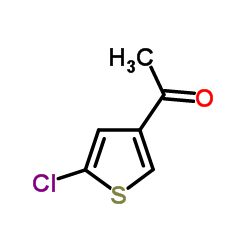
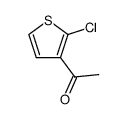

![(S)-3,4-二氢-4-羟基-2-(3-甲氧丙基)-2H-噻吩并[3,2-E]-1,2-噻嗪-6-磺酰胺 1,1-二氧化物结构式](https://image.chemsrc.com/caspic/053/154127-42-1.png)

![(S)-6-氯-2-(3-甲氧基丙基)-3,4-二氢-2H-噻吩并[3,2-e][1,2]噻嗪-4-醇 1,1-二氧化物结构式](https://image.chemsrc.com/caspic/230/160982-13-8.png)